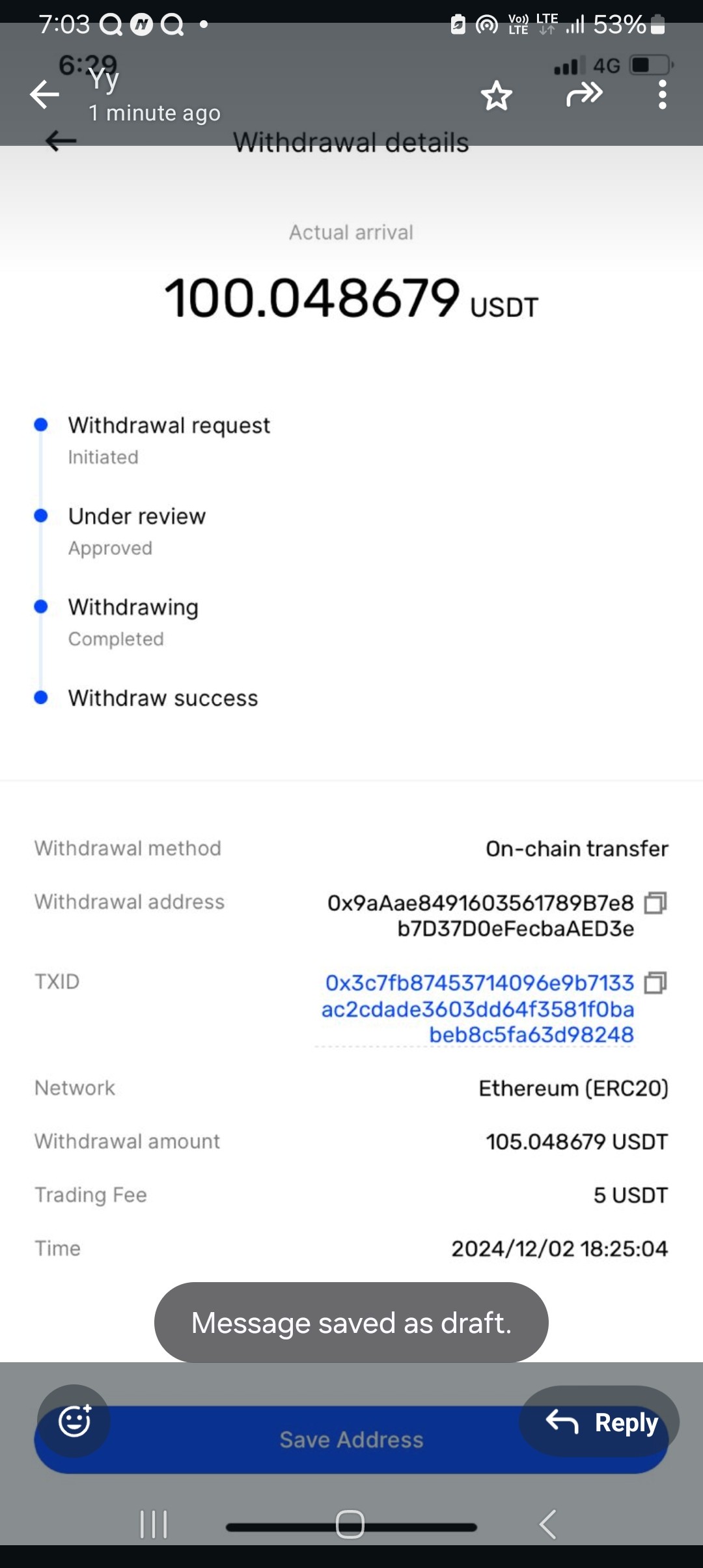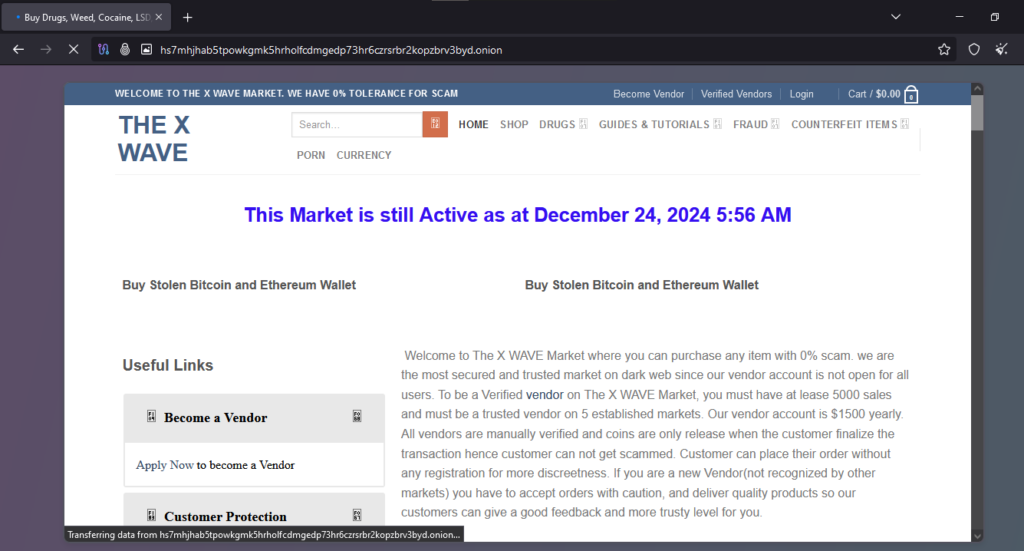Table of Contents
ToggleThe X Wave Market – TOR Scam Report (16)
Onion Link : http://hs7mhjhab5tpowkgmk5hrholfcdmgedp73hr6czrsrbr2kopzbrv3byd.onion/
Scam Report Date : 2024-12-03
Client Scam Report Breakdown
Original Scam Report :
The client report outlines a straightforward case of a suspected scam: “I paid 100 USDT but not response me after received payment.” This statement indicates that the client transferred 100 USDT (a cryptocurrency tied to the US dollar’s value) to a seller or service provider but received no product, service, or response after the payment. The lack of communication following the transaction strongly suggests fraudulent intent. The situation exemplifies a non-delivery scam, a common tactic where the scammer ceases communication immediately after securing the payment.
This type of scam is prevalent in cryptocurrency transactions because these payments are largely irreversible and offer a degree of anonymity. The absence of a response from the recipient highlights the high-risk nature of dealing with unverified vendors, particularly when using digital currencies. The client’s concise account points to a pattern often seen in fraud cases on less-regulated platforms or when transacting with unknown parties.

2. Definition of Key Terms and Terminology
- USDT (Tether): A type of cryptocurrency that is pegged to the US dollar, maintaining a 1:1 value. It is commonly used for transactions due to its price stability compared to other cryptocurrencies.
- Non-Delivery Scam: A fraudulent scheme in which the seller receives payment but fails to provide the promised goods or services.
- Irreversible Payment: A payment method, such as cryptocurrency, where transactions cannot be reversed once completed. Unlike credit card payments, there is no recourse for chargebacks or disputes in these systems.
- Unverified Vendor: A seller or service provider whose credibility cannot be independently confirmed. Transactions with such vendors carry an increased risk of fraud.
- Scammer Tactics: Strategies used by fraudsters, such as ceasing communication after receiving payment or providing false assurances to delay action by the victim.
The choice of USDT in the transaction is notable because its value stability makes it an attractive currency for both legitimate business and illicit activity. Unfortunately, its use in this case highlights the challenges of recovering funds in crypto scams. Without built-in buyer protections or centralized authorities overseeing transactions, users are often left without options once the payment is complete.
3. Implications and Analysis
This report underscores the inherent risks associated with cryptocurrency transactions, particularly when dealing with unverified vendors. The scammer’s strategy—accepting payment and subsequently ceasing communication—aligns with a common pattern in fraudulent operations. Victims are often left with no means of contacting the scammer or recovering their funds, as cryptocurrency transactions are designed to be secure and irreversible. This lack of recourse highlights the importance of due diligence before initiating any transaction involving digital currencies.
To avoid similar situations, clients are advised to only transact with vendors or service providers with verified reputations. Platforms offering escrow services, where payments are held until both parties confirm the transaction, can mitigate risks. Additionally, victims of cryptocurrency scams should report the incident to the relevant platform (if any) and local authorities, as some blockchain forensics tools can potentially trace fraudulent activity. However, recovery remains difficult in most cases, particularly when transactions occur on decentralized platforms.
This report serves as a cautionary tale for anyone engaging in cryptocurrency-based transactions. While digital currencies like USDT offer convenience and stability, their inherent lack of consumer protections can leave users vulnerable to scams. By raising awareness of red flags, such as vendors who avoid verification or fail to maintain communication, potential victims can better protect themselves from falling prey to similar fraudulent schemes.







